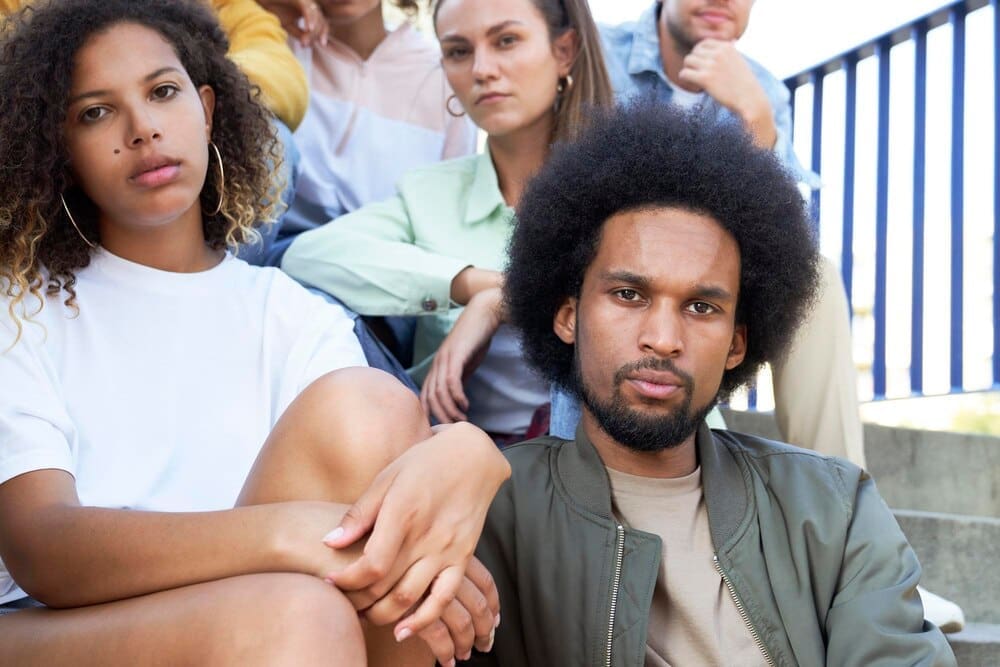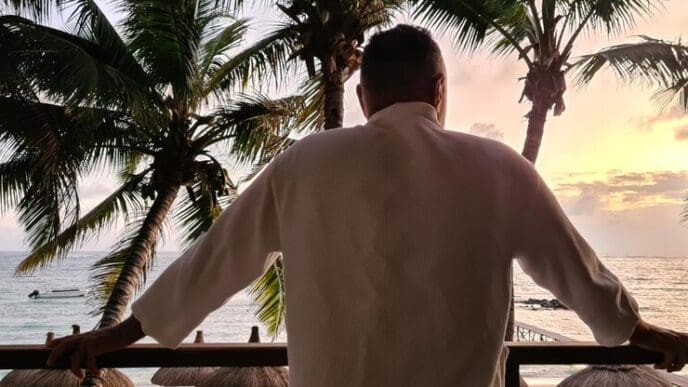In Miami, a city defined as much by its resilience as its vibrant coastline, a profound and often silent psychological struggle affects many of its residents: survivor’s guilt. This complex emotional response arises when an individual survives a traumatic event that others did not, manifesting in those who have fled political turmoil in their homelands, weathered catastrophic hurricanes, or escaped cycles of poverty and violence. From the Cuban exile who secured passage to freedom while family remained behind to the Surfside resident whose apartment was spared in the tragic Champlain Towers collapse, this form of guilt is a pervasive undercurrent in a community built on stories of survival, posing a significant challenge to mental well-being that requires acknowledgment, understanding, and compassionate intervention.
What is Survivor’s Guilt?
Survivor’s guilt is not a formal psychiatric diagnosis listed in the Diagnostic and Statistical Manual of Mental Disorders (DSM-5), but it is widely recognized by clinicians as a significant symptom of post-traumatic stress disorder (PTSD). It can also exist on its own as a powerful and distressing reaction to surviving a life-threatening or deeply traumatic situation.
The core of this experience is an overwhelming sense of guilt for having survived when others died, were harmed, or were left behind in dire circumstances. This feeling is often irrational, as the survivor typically had no control over the outcome. Yet, the mind grapples with profound, unanswerable questions: “Why me?” “Why was I spared?” “What could I have done differently?”
These intrusive thoughts can lead to a belief that one is unworthy of survival or happiness. It is more than simple sadness or grief; it is a deep-seated feeling of having done something wrong simply by continuing to live. This can make it incredibly difficult for a survivor to process their trauma and move forward with their life.
Miami’s Unique Crucible for Guilt
While survivor’s guilt can affect anyone, anywhere, Miami’s unique demographic and geographic landscape creates a potent environment where these feelings can flourish. The city is a mosaic of experiences, with many residents carrying the weight of pasts that stand in stark contrast to the city’s sun-drenched image.
The Immigrant and Exile Experience
Miami has long been a sanctuary for those fleeing political instability, persecution, and economic collapse. For generations, Cubans, Haitians, Nicaraguans, and more recently, Venezuelans have arrived seeking safety and opportunity. This journey is almost always marked by profound loss.
An individual might have been the only member of their family to secure a visa, or the one who braved a perilous journey by sea. They live with the daily reality that their loved ones remain in countries with food shortages, political oppression, or a lack of basic medical care. The joy of personal freedom is often tinged with guilt over the suffering of those left behind. Every success—a new job, a stable home, a child’s graduation—can trigger a painful reminder of what their family and friends lack.
This feeling is compounded by the arbitrary nature of immigration. One person is granted asylum while another is deported. One family finds a sponsor while another languishes in a refugee camp. This randomness can feed the narrative of unworthiness, making a survivor feel their good fortune is an undeserved fluke.
Surviving Natural Disasters
As a city on the front lines of climate change, Miami is perpetually in the path of hurricanes. The collective trauma of storms like Hurricane Andrew in 1992 or Hurricane Irma in 2017 lingers in the community’s psyche. In the aftermath, survivor’s guilt can take root in arbitrary ways.
One person’s home may be untouched, while their next-door neighbor’s is completely destroyed. A family might evacuate and return to safety, only to learn of others in their community who stayed and perished. This “geographic lottery” of destruction can leave survivors feeling immense guilt over their own safety and preservation of property, creating a chasm between their relief and their empathy for those who lost everything.
The Specter of Sudden Tragedy
Nothing illustrates the acute nature of survivor’s guilt more vividly than the June 2021 collapse of the Champlain Towers South condominium in Surfside. In an instant, a residential building became a site of unimaginable loss, killing 98 people. The survivors included not only those who escaped the collapse but also residents who happened to be away from home that night.
These individuals were left to grapple with the sudden, violent loss of their neighbors, friends, and community. They lost their homes and possessions but survived, while others just a few feet away did not. This type of event creates a powerful and localized form of trauma, where the question of “Why me?” is inescapable and deeply painful.
Escaping Cycles of Violence and Poverty
Survivor’s guilt also extends to those who have overcome socioeconomic adversity. An individual who grew up in a neighborhood plagued by gang violence or deep poverty and manages to achieve education and professional success may feel a sense of guilt toward friends, siblings, or peers who remain “stuck.”
They may feel that their success is a betrayal of their roots or that they do not deserve their new life while others continue to struggle. This can create social and emotional distance, making it difficult to fully enjoy their achievements without feeling the pull of the world they left behind.
Pathways to Healing and Resilience
Navigating survivor’s guilt is a challenging journey, but healing is possible. It requires a conscious effort to reframe thoughts, process trauma, and find a new sense of purpose. For residents of a diverse community like Miami, this often involves a blend of professional help and culturally specific support systems.
Acknowledge and Validate the Feelings
The first and most critical step is to acknowledge that the feelings of guilt are real, even if they seem irrational. Telling someone—or oneself—”You shouldn’t feel guilty” is counterproductive. The emotion is a natural byproduct of trauma and empathy. Validating the feeling as a normal response to an abnormal situation is the foundation for healing.
Seek Professional, Trauma-Informed Care
Therapy is highly effective for addressing survivor’s guilt. Clinicians specializing in trauma can provide tools to manage the symptoms. Some key therapeutic approaches include:
- Cognitive Behavioral Therapy (CBT): This therapy helps individuals identify and challenge the irrational thought patterns that fuel guilt. A therapist can help a survivor reframe thoughts like “It’s my fault” to a more realistic and compassionate perspective, such as “I survived a terrible event, and I had no control over the outcome.”
- Eye Movement Desensitization and Reprocessing (EMDR): EMDR is a specialized therapy designed to help people process and heal from traumatic memories. By using bilateral stimulation (like eye movements), it can reduce the emotional charge of the trauma, allowing the survivor to remember the event without being overwhelmed by guilt and distress.
- Support Groups: Connecting with other survivors can be incredibly powerful. In a support group, individuals realize they are not alone in their feelings. Sharing stories in a safe, moderated environment can reduce isolation and foster a sense of shared humanity.
Find Meaning Through Action
One of the most powerful ways to counteract the helplessness associated with survivor’s guilt is to take meaningful action. This is a way of honoring those who were lost or are still suffering. This concept, known as “post-traumatic growth,” involves channeling the painful experience into something positive.
For an immigrant, this could mean sending remittances home, advocating for immigration reform, or volunteering to help newly arrived refugees. For a disaster survivor, it might involve joining community preparedness efforts or fundraising for affected families. By transforming guilt into purpose, survivors can create a legacy of help and hope.
Lean on Community and Culture
In Miami, cultural and community ties are a vital source of strength. Faith-based organizations, community centers, and cultural groups provide spaces where people can connect with others who share their language and lived experiences. These networks offer a powerful buffer against the isolation that often accompanies trauma and guilt.
Survivor’s guilt is a heavy burden, a shadow that follows traumatic loss and unlikely fortune. In Miami, it is woven into the very fabric of a community defined by stories of escape, endurance, and tragedy. By understanding its roots, recognizing its symptoms, and embracing compassionate pathways to healing, individuals can learn to navigate these complex emotions. It is a journey from asking “Why me?” to finding a way to live for those who could not, transforming the pain of survival into a life of meaning and purpose.














